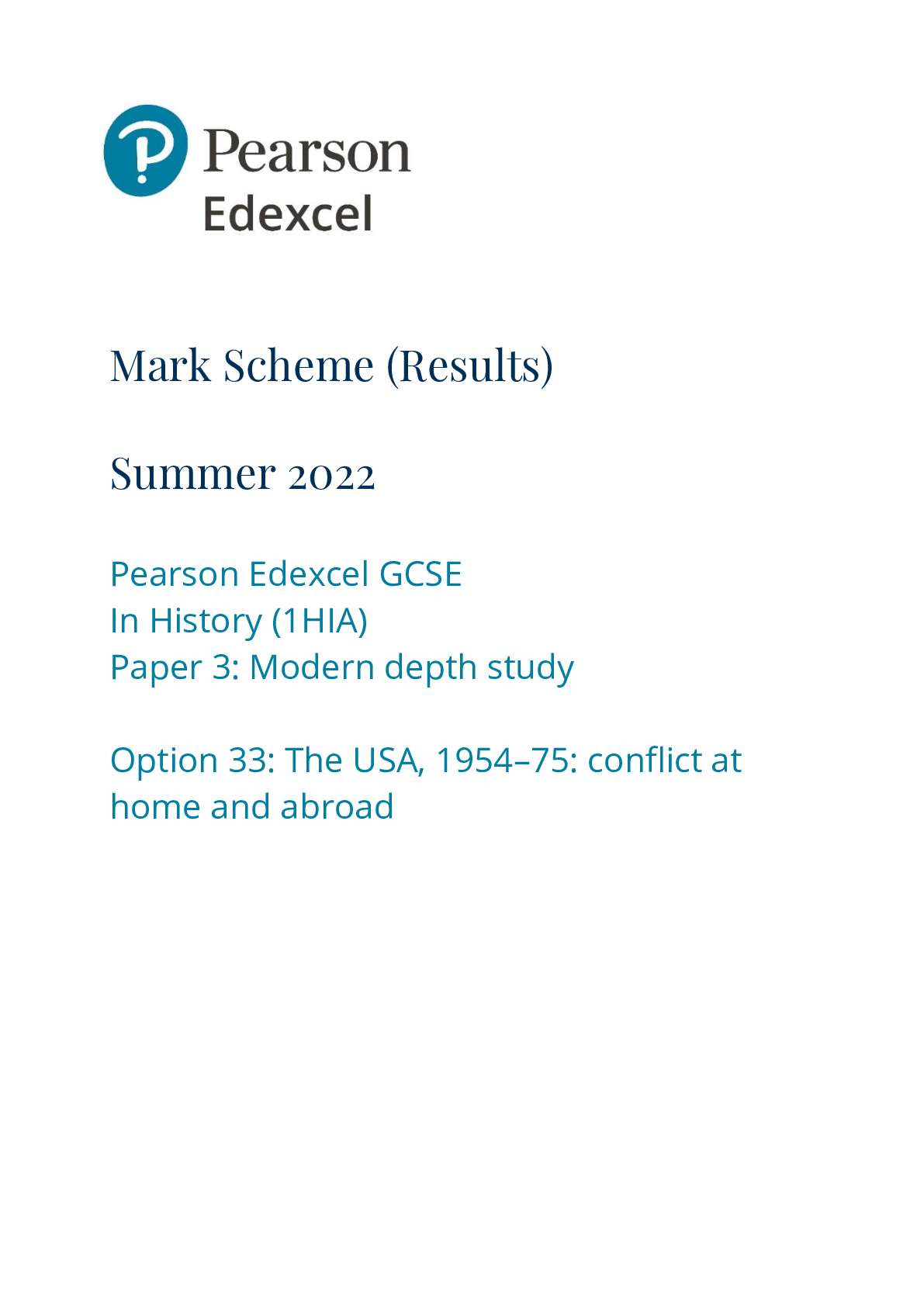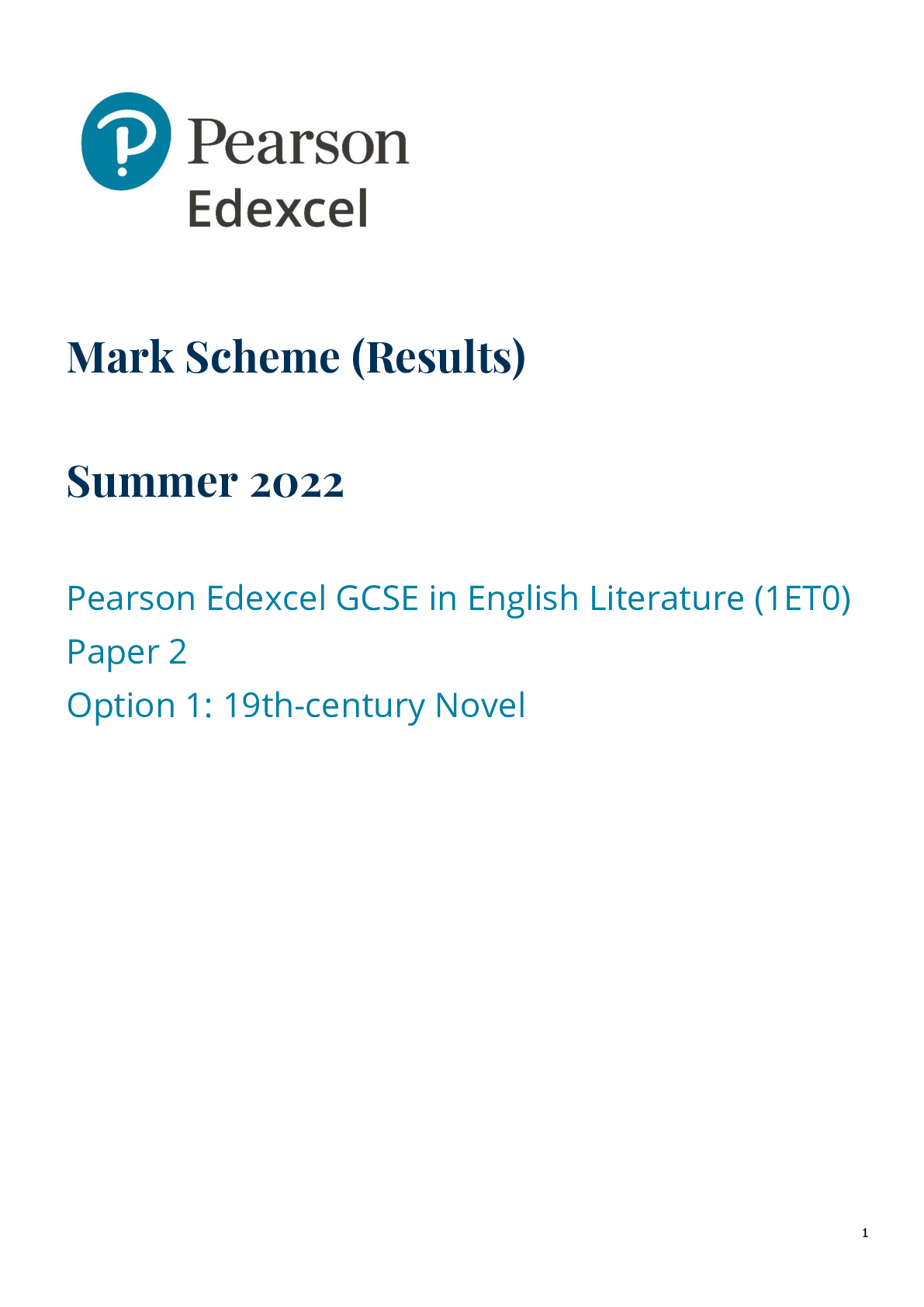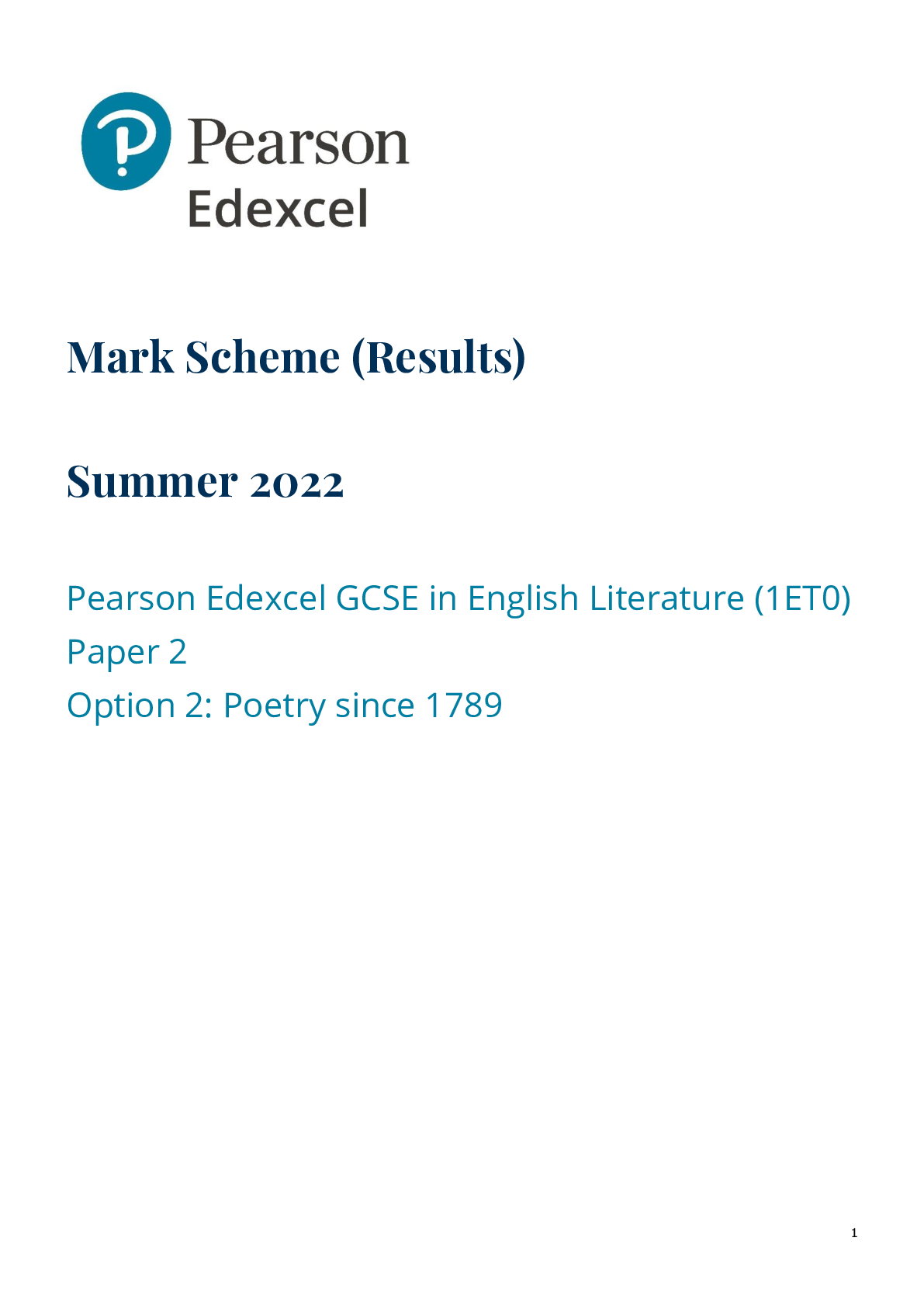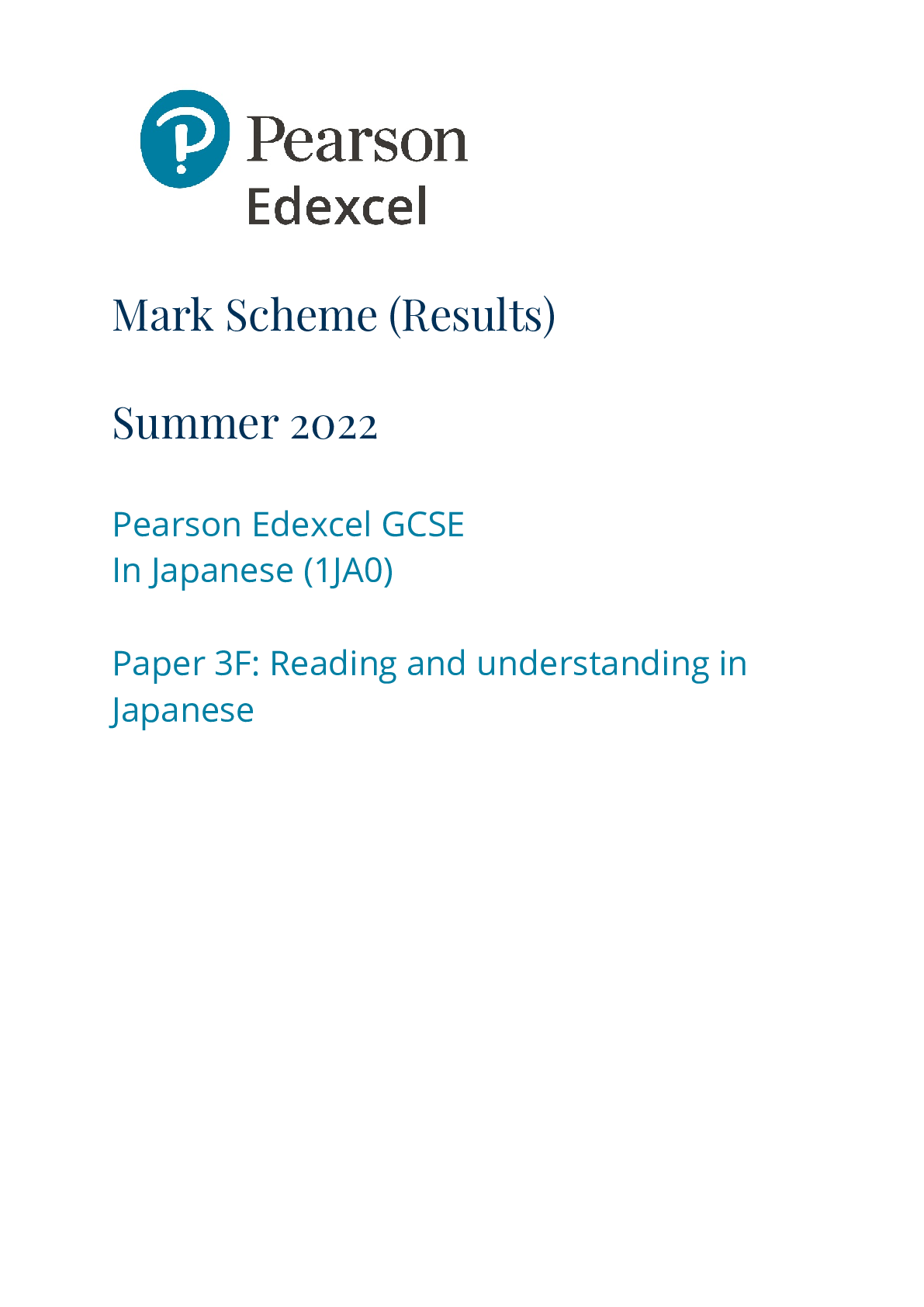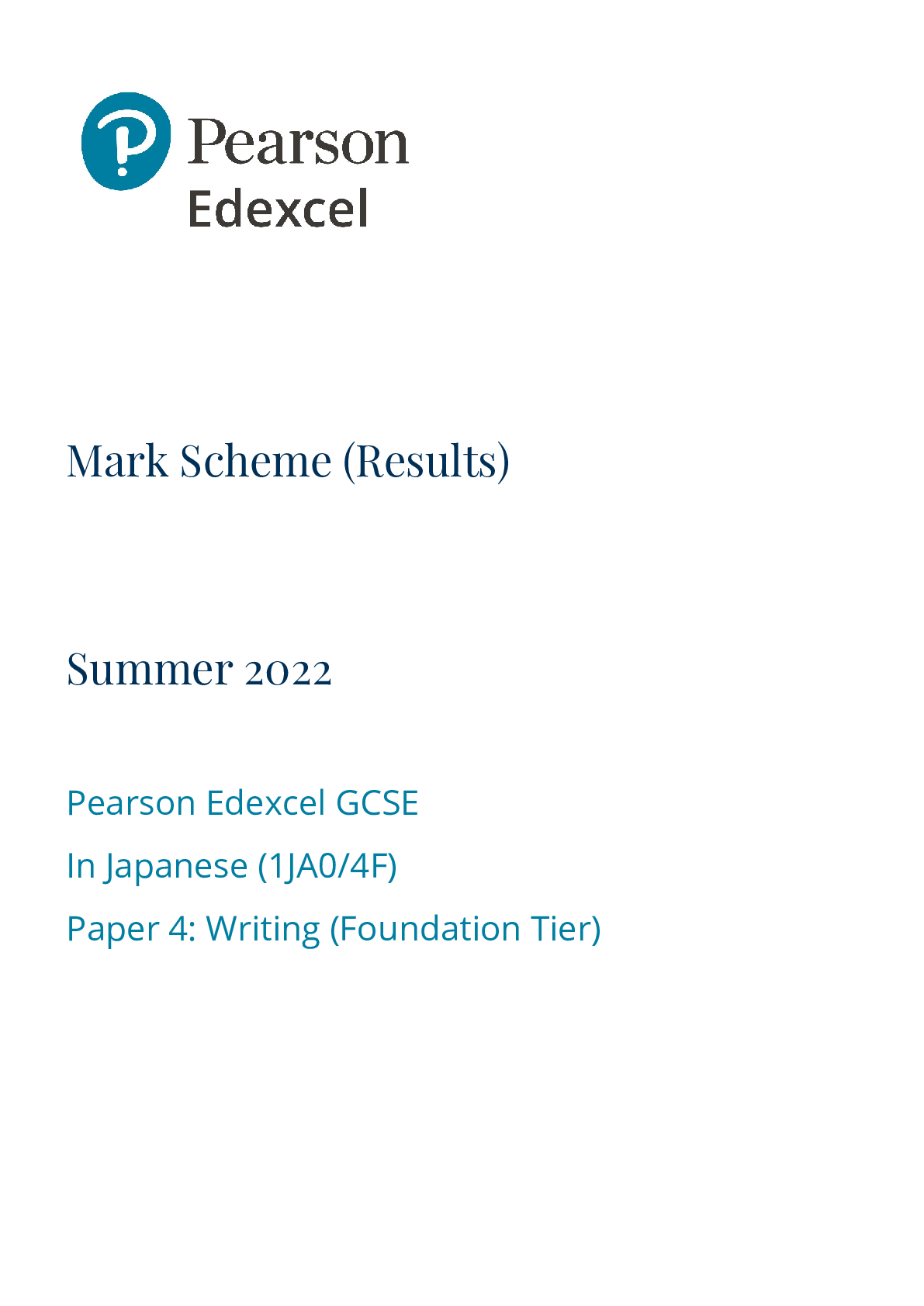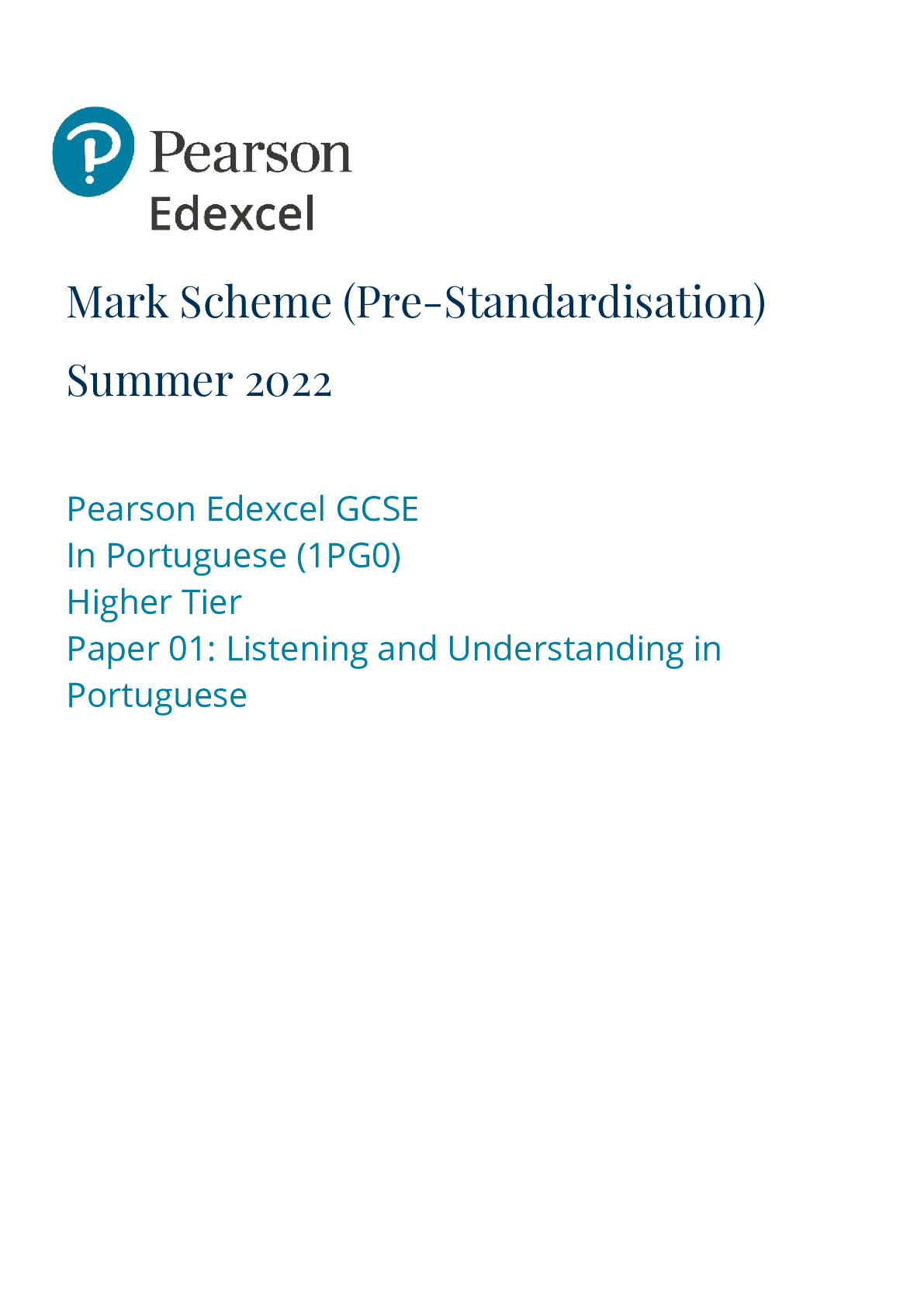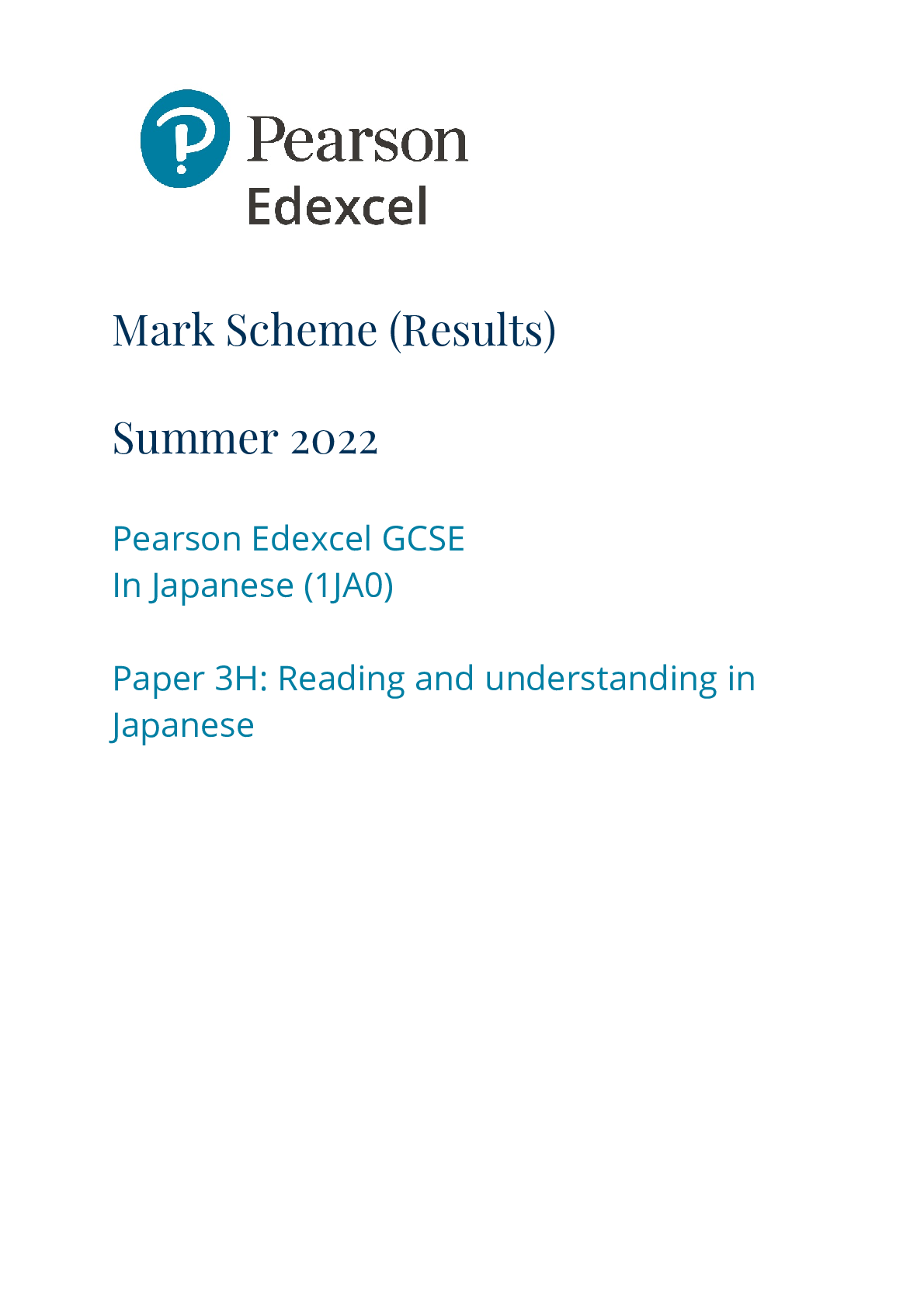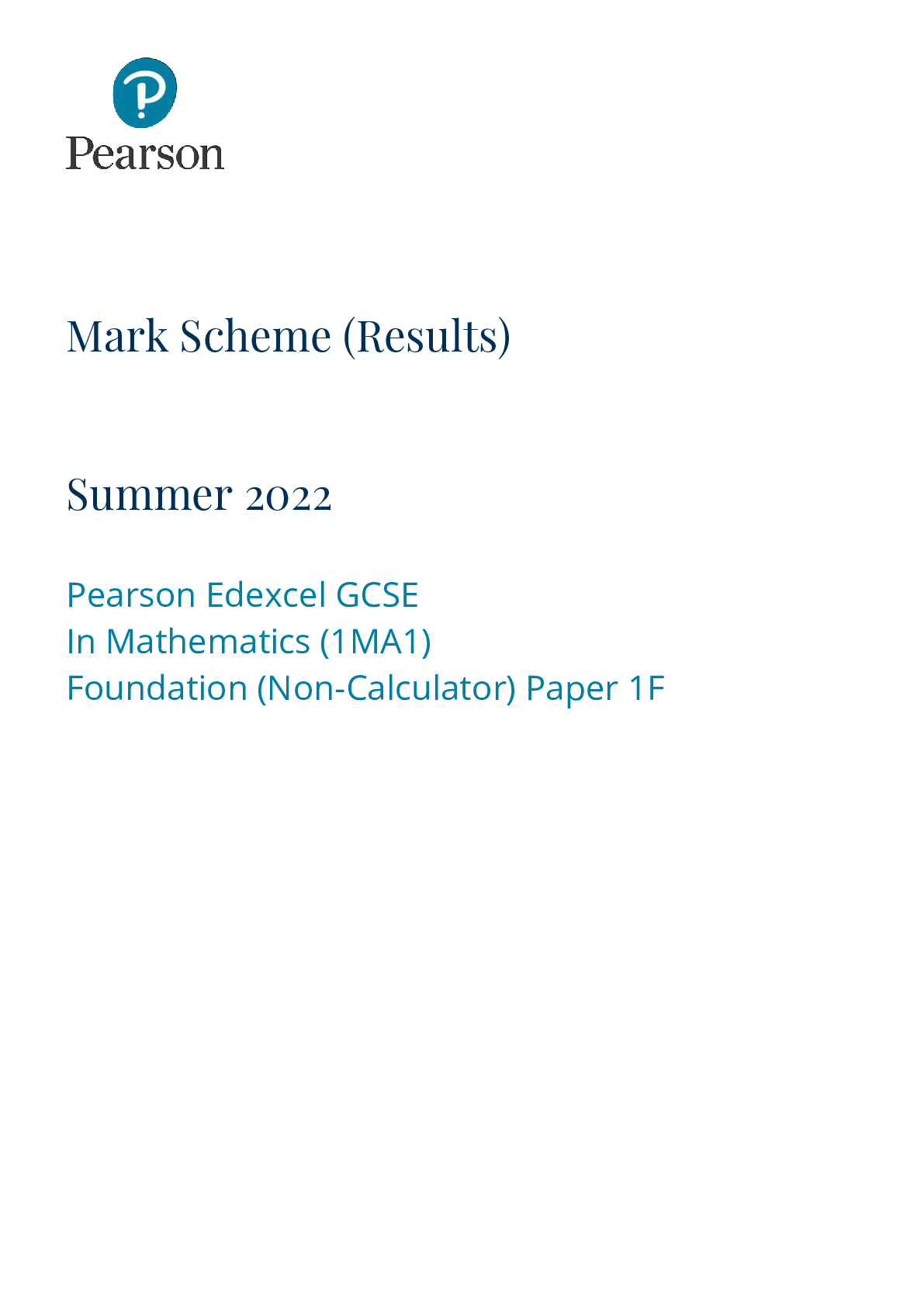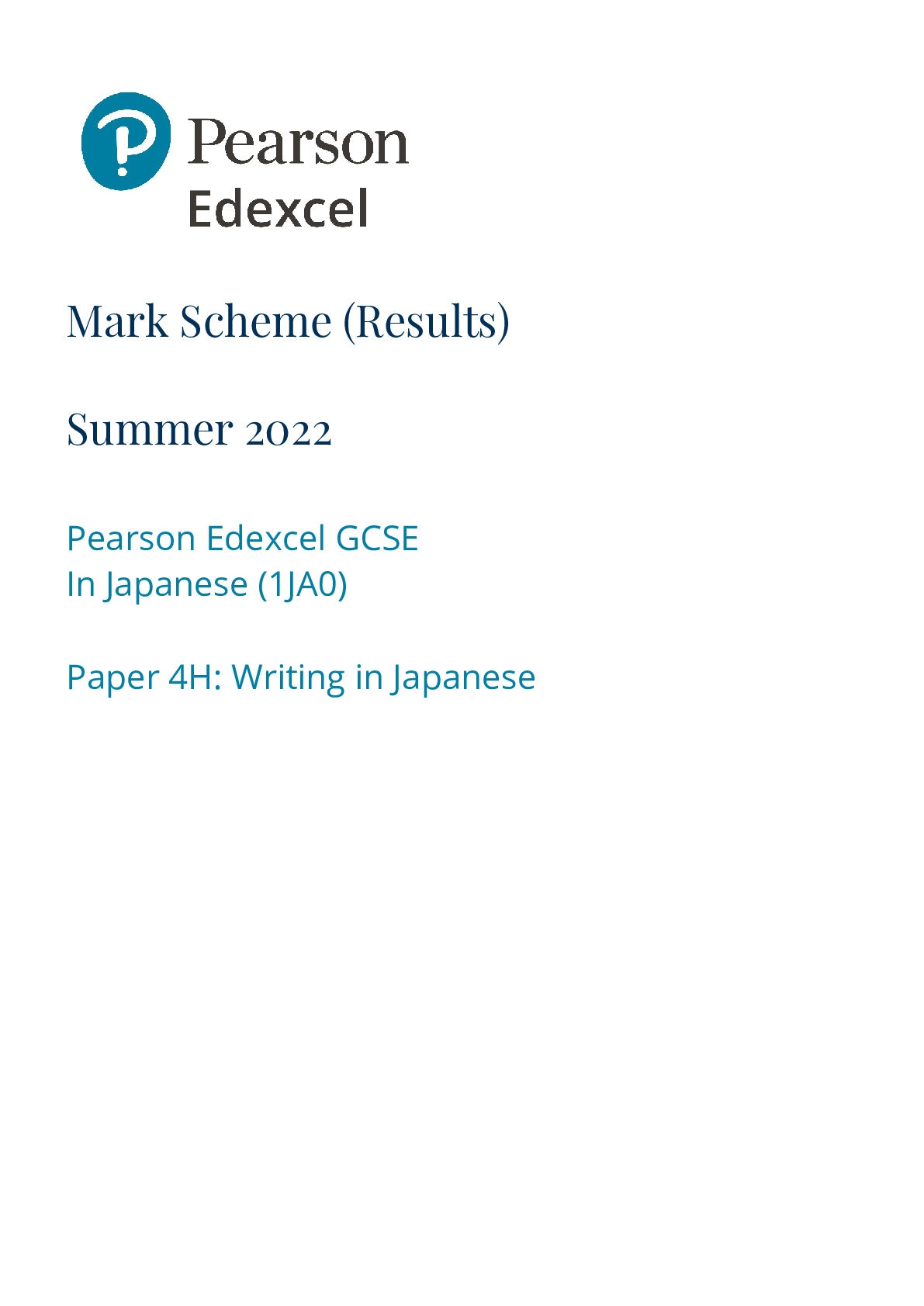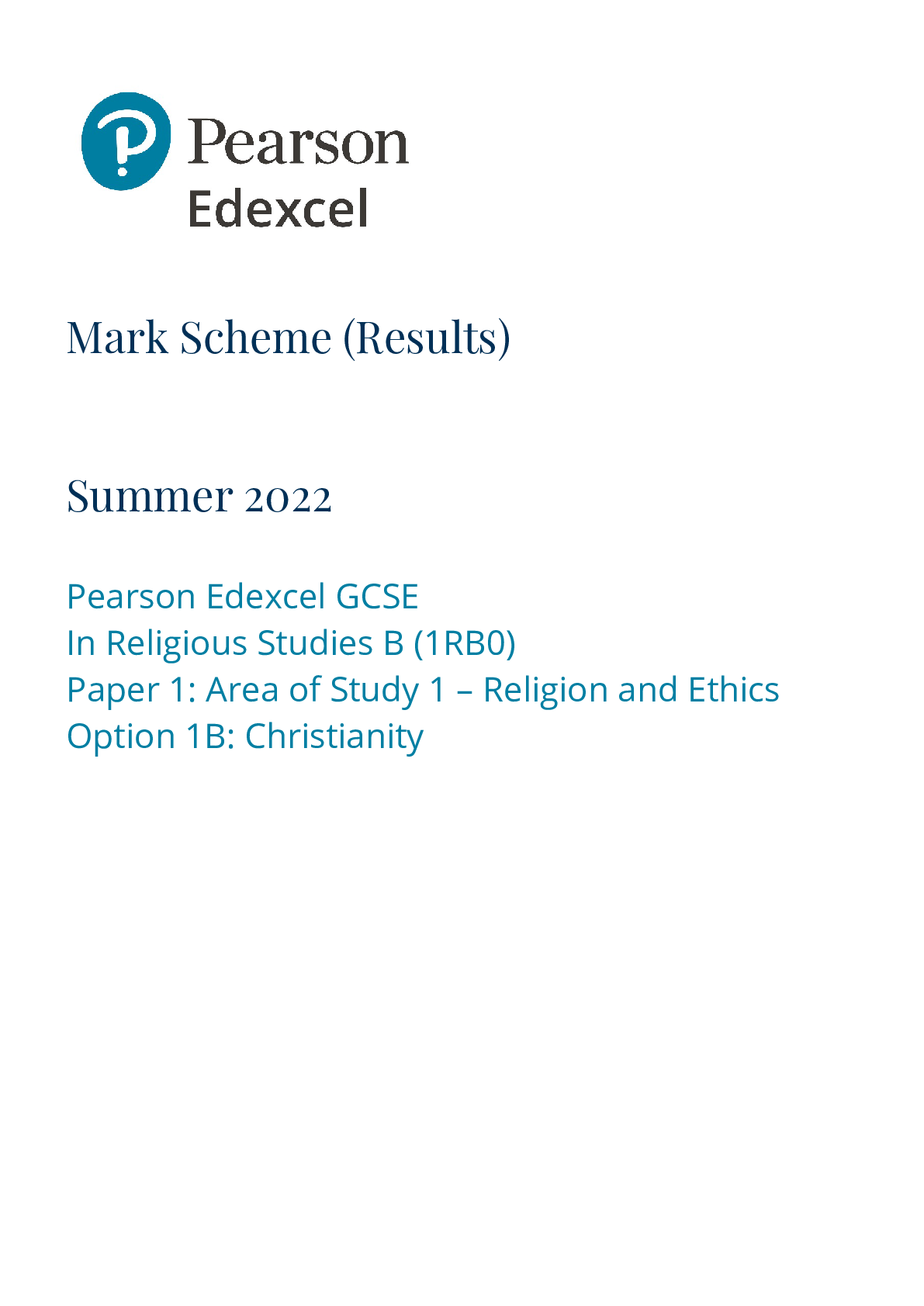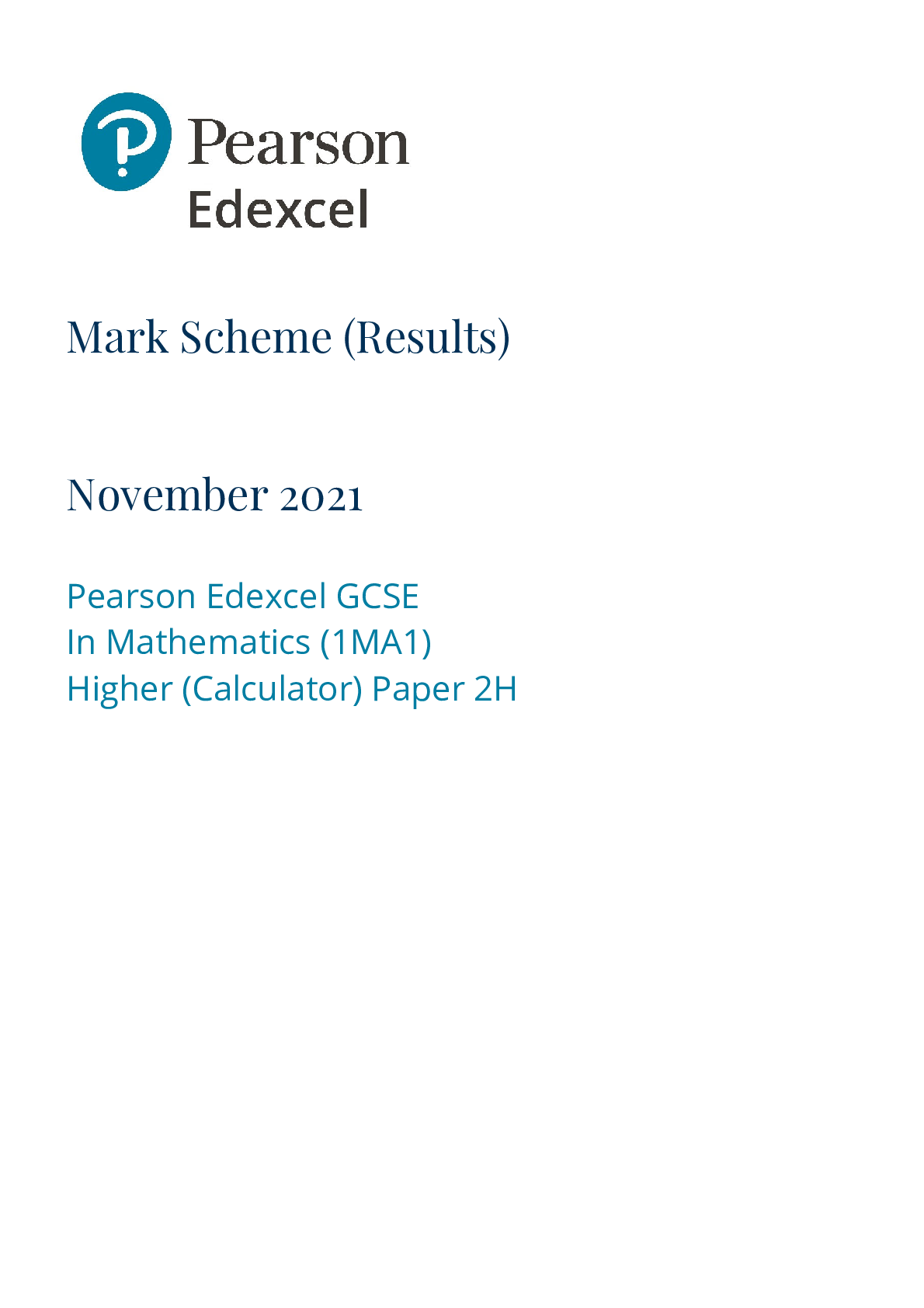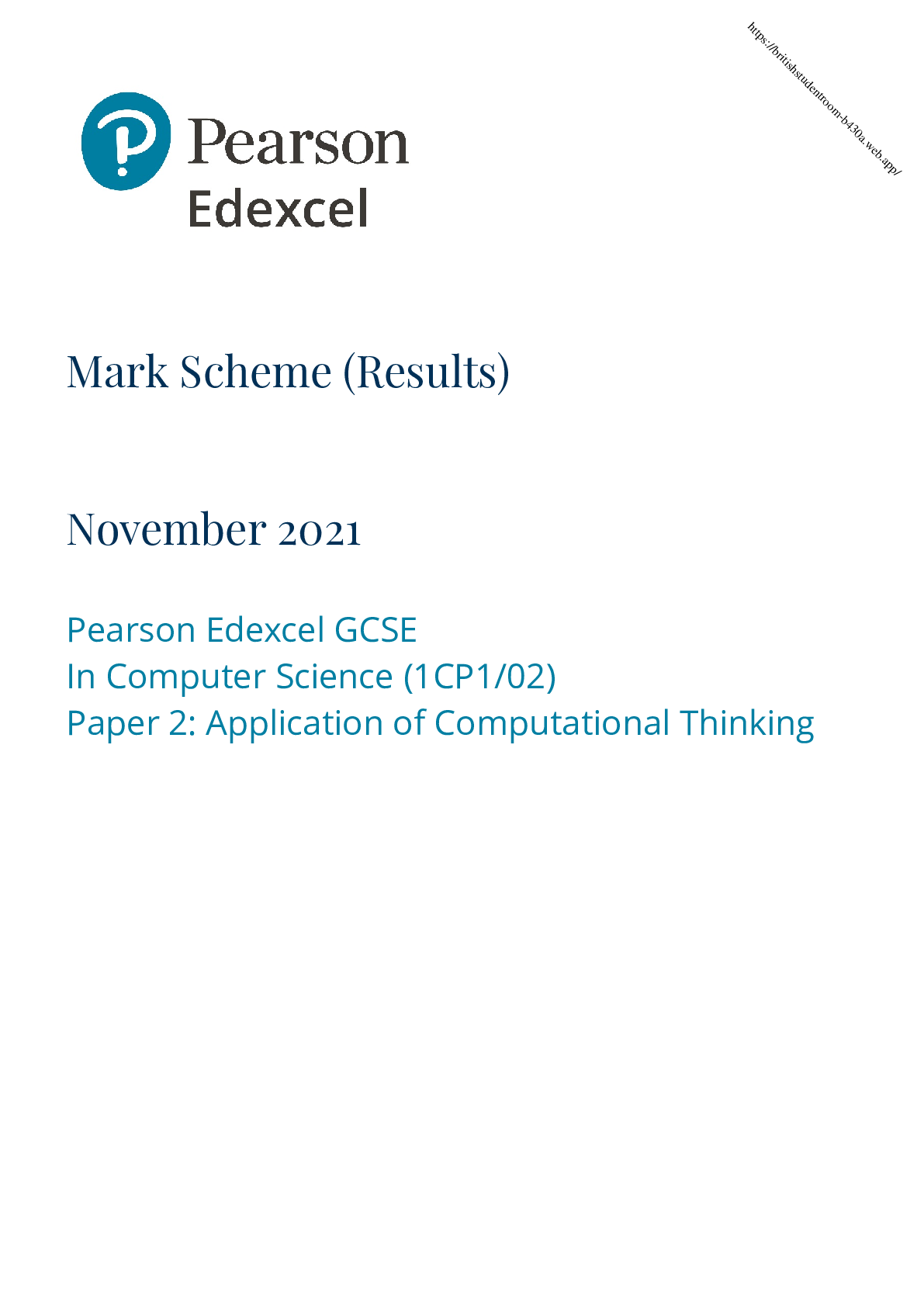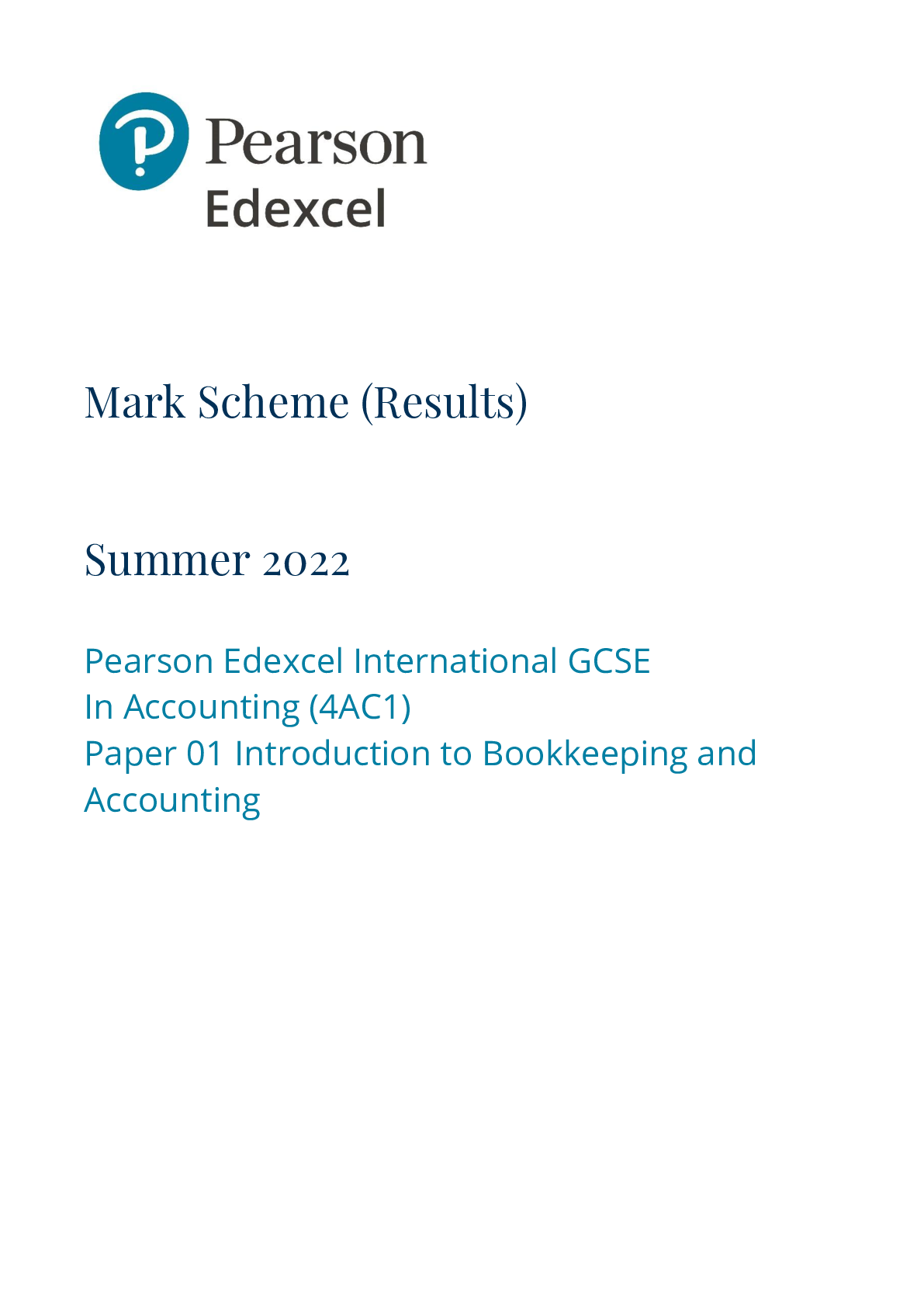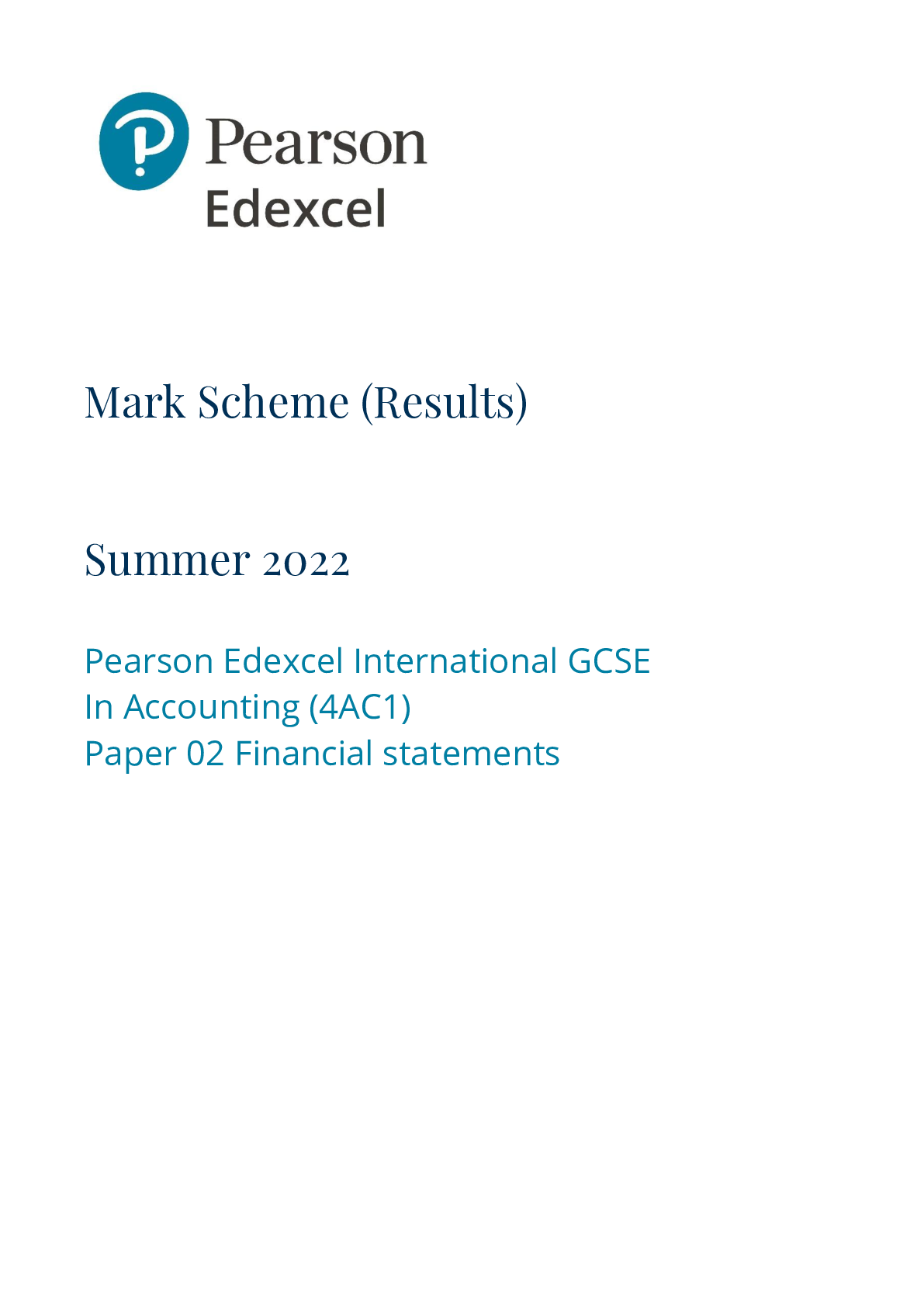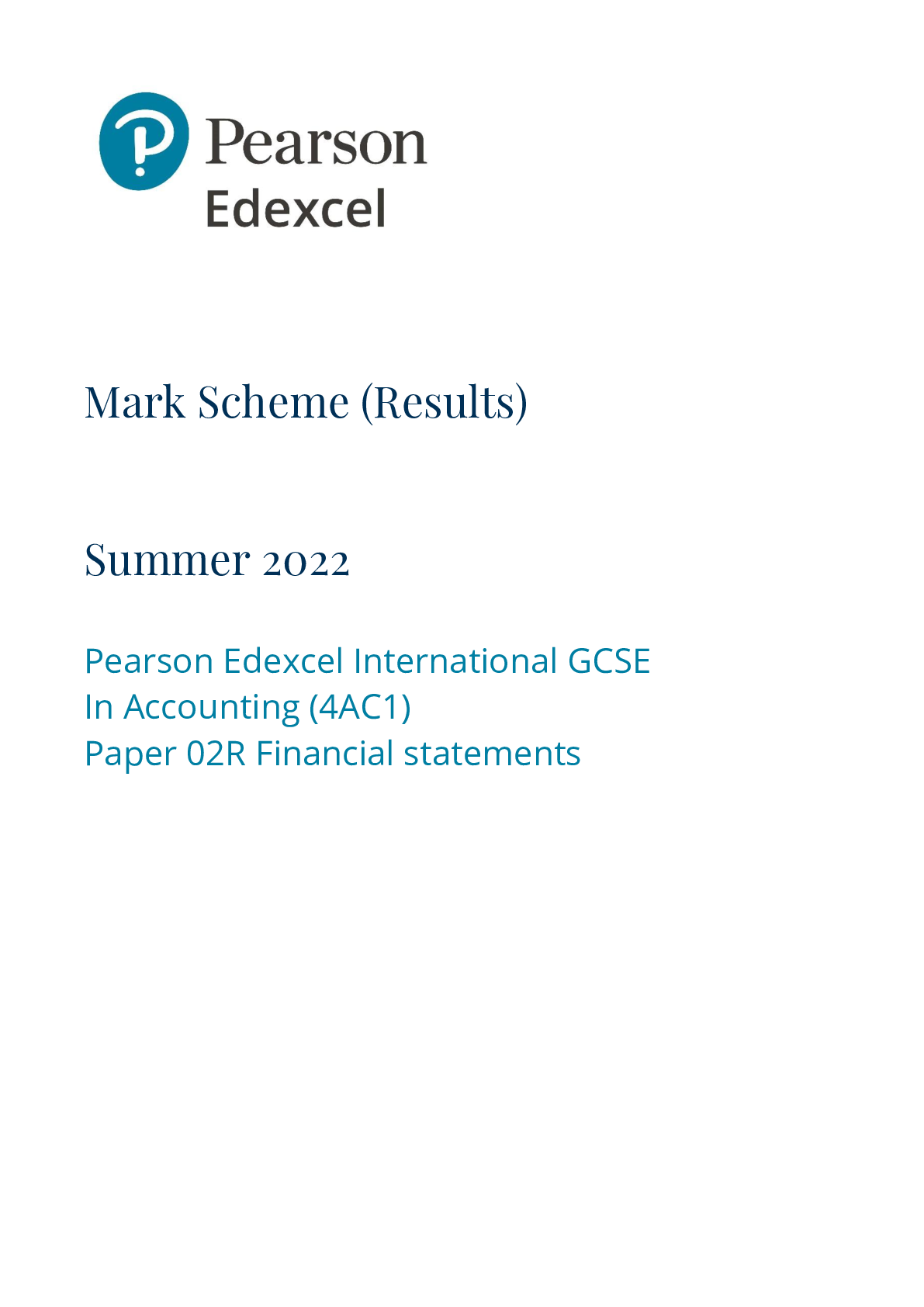Combined Science: Synergy > MARK SCHEME > Mark Scheme (Results) Summer 2022 Pearson Edexcel GCSE In Combined Science (1SC0) Paper 1CF Edexcel (All)
Mark Scheme (Results) Summer 2022 Pearson Edexcel GCSE In Combined Science (1SC0) Paper 1CF Edexcel and BTEC Qualifications.
Document Content and Description Below
Mark Scheme (Results) Summer 2022 Pearson Edexcel GCSE In Combined Science (1SC0) Paper 1CF Edexcel and BTEC Qualifications Edexcel and BTEC qualifications are awarded by Pearson, the UK’s lar... gest awarding body. We provide a wide range of qualifications including academic, vocational, occupational and specific programmes for employers. For further information visit our qualifications websites at www.edexcel.com or www.btec.co.uk. Alternatively, you can get in touch with us using the details on our contact us page at www.edexcel.com/contactus. Pearson: helping people progress, everywhere Pearson aspires to be the world’s leading learning company. Our aim is to help everyone progress in their lives through education. We believe in every kind of learning, for all kinds of people, wherever they are in the world. We’ve been involved in education for over 150 years, and by working across 70 countries, in 100 languages, we have built an international reputation for our commitment to high standards and raising achievement through innovation in education. Find out more about how we can help you and your students at: www.pearson.com/uk Summer 2022 Publications Code 1SC0_1CF_2206_MS All the material in this publication is copyright © Pearson Education Ltd 2022 General Marking Guidance • All candidates must receive the same treatment. Examiners must mark the first candidate in exactly the same way as they mark the last. • Mark schemes should be applied positively. Candidates must be rewarded for what they have shown they can do rather than penalised for omissions. • Examiners should mark according to the mark scheme not according to their perception of where the grade boundaries may lie. • There is no ceiling on achievement. All marks on the mark scheme should be used appropriately. • All the marks on the mark scheme are designed to be awarded. Examiners should always award full marks if deserved, i.e. if the answer matches the mark scheme. Examiners should also be prepared to award zero marks if the candidate’s response is not worthy of credit according to the mark scheme. • Where some judgement is required, mark schemes will provide the principles by which marks will be awarded and exemplification may be limited. • When examiners are in doubt regarding the application of the mark scheme to a candidate’s response, the team leader must be consulted. • Crossed out work should be marked UNLESS the candidate has replaced it with an alternative response. Mark schemes have been developed so that the rubrics of each mark scheme reflects the characteristics of the skills within the AO being targeted and the requirements of the command word. So for example the command word ‘Explain’ requires an identification of a point and then reasoning/justification of the point. Explain questions can be asked across all AOs. The distinction comes whether the identification is via a judgment made to reach a conclusion, or, making a point through application of knowledge to reason/justify the point made through application of understanding. It is the combination and linkage of the marking points that is needed to gain full marks. When marking questions with a ‘describe’ or ‘explain’ command word, the detailed marking guidance below should be consulted to ensure consistency of marking. Assessment Objective Command Word Strand Element Describe Explain AO1* An answer that combines the marking points to provide a logical description An explanation that links identification of a point with reasoning/justification(s) as required AO2 An answer that combines the marking points to provide a logical description, showing application of knowledge and understanding An explanation that links identification of a point (by applying knowledge) with reasoning/justification (application of understanding) AO3 1a and 1b An answer that combines points of interpretation/evaluation to provide a logical description AO3 2a and 2b An explanation that combines identification via a judgment to reach a conclusion via justification/reasoning AO3 3a An answer that combines the marking points to provide a logical description of the plan/method/experiment AO3 3b An explanation that combines identifying an improvement of the experimental procedure with a linked justification/reasoning *there will be situations where an AO1 question will include elements of recall of knowledge directly from the specification (up to a maximum of 15%). These will be identified by an asterisk in the mark scheme 2206 1SC0_1CF Paper 1CF Foundation Tier Question number Answer Additional guidance Mark 1(a) Arrangement – 1 mark max in a solid (particles are): • regularly arranged/ close(r) / in lattice / fixed (position) (1) OR in a liquid (particles are): • randomly arranged / further apart (1) Movement – 1 mark max in a solid (particles): • vibrate / do not move (around) (1) OR In a liquid (particles): • move (1) answer for one state will be taken to imply opposite for other; but if both given, both must be correct OR one correct and one an ignore allow uniformly arranged / in a fixed shape / (tightly) packed together / in lines / in layers / in rows / ordered / organised ignore compact(ed) / attached / bonded / particles touching allow spread out / space between particles reject do not move much “They” is assumed to mean particles allow suitable diagrams allow answers in either space (2) AO1-1 Question number Answer Mark 1(b) D melting is the only correct answer A is not correct as condensing is gas to liquid B is not correct as evaporating is liquid to gas C is not correct as freezing is liquid to solid (1) AO1-1 Question number Answer Additional guidance Mark 1(c) melting point (too) high / (temperature) below melting point / metals have high melting point / (water is) not hot enough allow melting point higher (than chocolate) allow not enough {heat/ energy} / takes a lot of {heat / energy} allow metallic bonds are strong / no bonds have been broken (at temperature of water) ignore any statements referring to boiling point ignore ‘hard to melt’ (1) AO3-2b Question number Answer Additional guidance Mark 1(d) An explanation linking: • (when heated) changes to a solid (1) • (when cooled) stays solid / doesn’t change back / change is permanent / change is irreversible (1) allow it does not {boil / form gas}/ colour change (must be goes white if specified) / new substance forms ignore ‘changes state’ / (chemical) reaction occurs allow doesn’t go back to liquid / cannot change back (2) AO2-1 Question number Answer Mark 2(a)(i) C sedimentation filtration chlorination is the only correct answer A and B are incorrect as sedimentation is the first step D is incorrect as chlorination is the last step (1) AO1-1 Question number Answer Additional guidance Mark 2(a)(ii) to kill {bacteria / microorganisms / microbes / pathogens} ignore germs / diseases allow viruses allow ‘remove’ / ‘get rid of’ / eliminate for kill allow to sterilise / disinfect (the water) ignore to clean / purify / bleach / make water clear (1) AO1-1 Question number Answer Additional guidance Mark 2(a)(iii) A description including: • (put waste) water in tank / left to (stand / settle) (1) • {particles / dirt / impurities / sediment / solid} fall to bottom (1) allow any put in suitable large or small container e.g. container / beaker allow for MP1 add a substance that causes clumping / aluminium sulfate must have idea that particles sink reject large(r) pieces e.g– sand / rocks / branches etc - that would be filtered ignore any references to filtration before or after sedimentation (2) AO1-1 Question number Answer Additional guidance Mark 2(a)(iv) an explanation linking: • (the water) contains {chloride / fluoride, nitrate / sulfate / copper / magnesium / ions / salts } (1) • (therefore) more than just water (molecules) / it does not contain just water / which are impurities / pure substances contain only one substance / pure water does not contain ions (1) allow chemicals / minerals / substances ignore particles / metals / elements / molecules / things allow pure water is just H2O / contains hydrogen and oxygen only reject pure substances contain only one element allow pure water does not contain any of {ions in the table / these ions / specifically named ions from table} for 2 marks (2) AO3- 2a – 1 2b – 1 Question number Answer Additional guidance Mark 2(b)(i) (delivery) tube allow {glass / rubber / plastic} tube (1) AO2-1 Question number Answer Additional guidance Mark 2(b)(ii) an explanation linking: • add bung / cork (to top of flask) (1) • (so) {water / vapour / gas / steam} cannot escape (from top of flask) / will go into {(delivery) tube/ X} (1) ignore seal / block / lid / cover etc allow stopper allow incorrect naming of flask ignore ‘so water is collected’ allow incorrect naming of delivery tube mark independently for max 1 allow replacement of X with a (Liebig) condenser / cooling of del [Show More]
Last updated: 1 year ago
Preview 1 out of 22 pages
Instant download
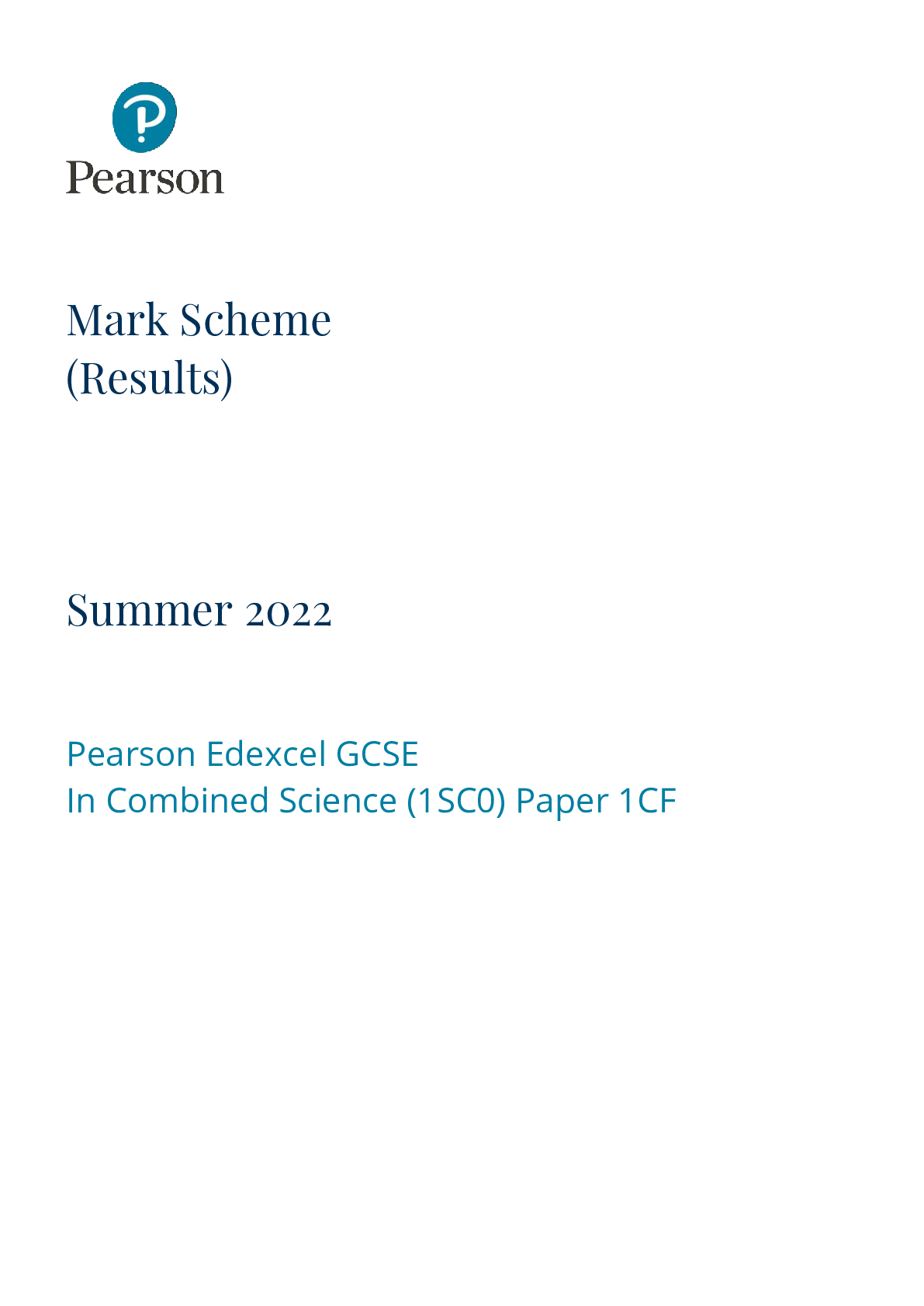
Buy this document to get the full access instantly
Instant Download Access after purchase
Add to cartInstant download
Reviews( 0 )
Document information
Connected school, study & course
About the document
Uploaded On
Apr 03, 2023
Number of pages
22
Written in
Additional information
This document has been written for:
Uploaded
Apr 03, 2023
Downloads
0
Views
75

